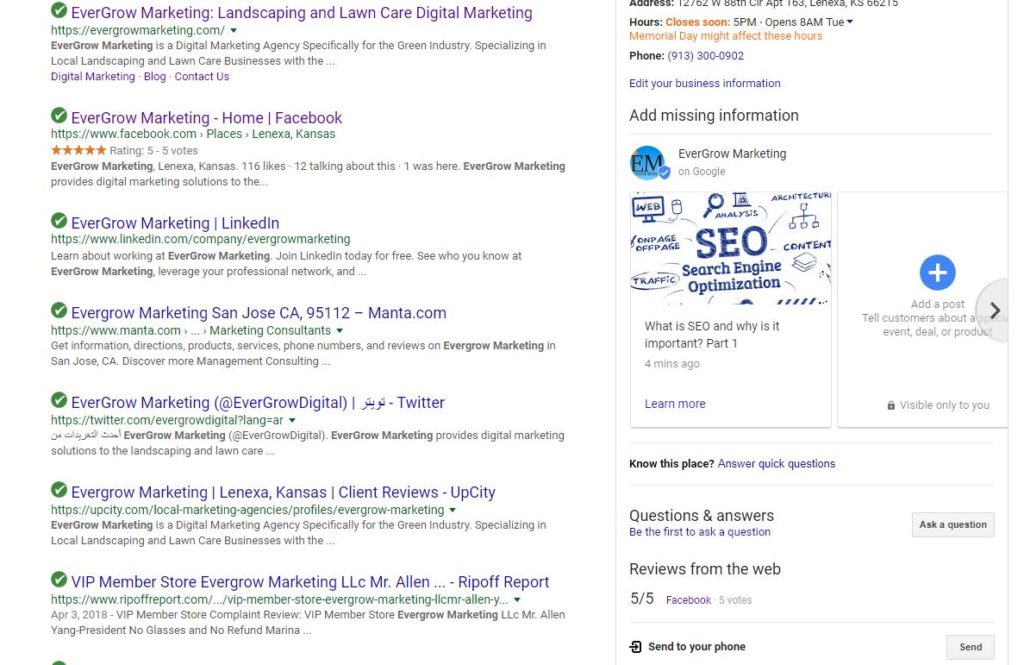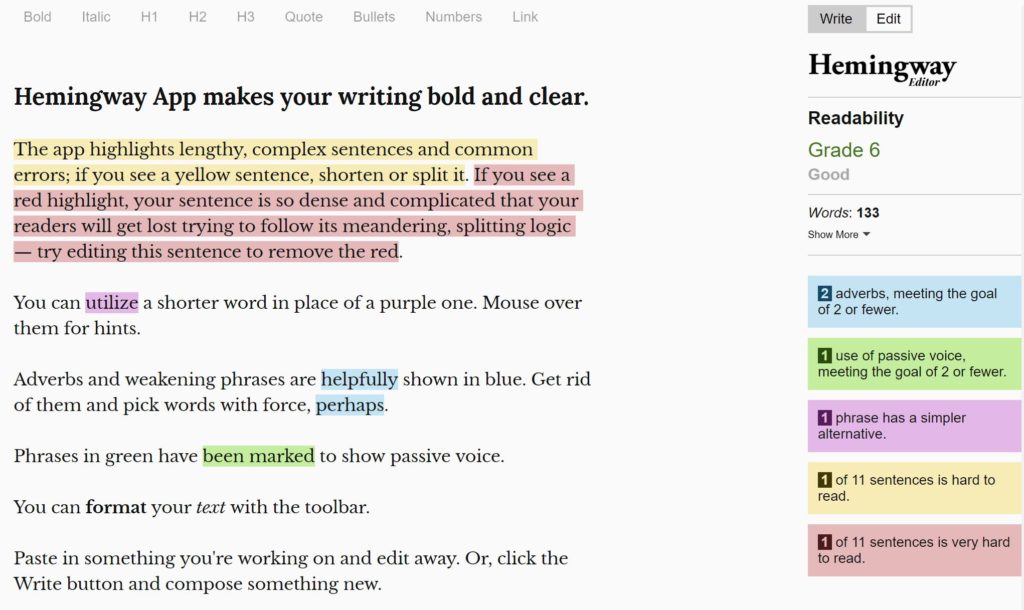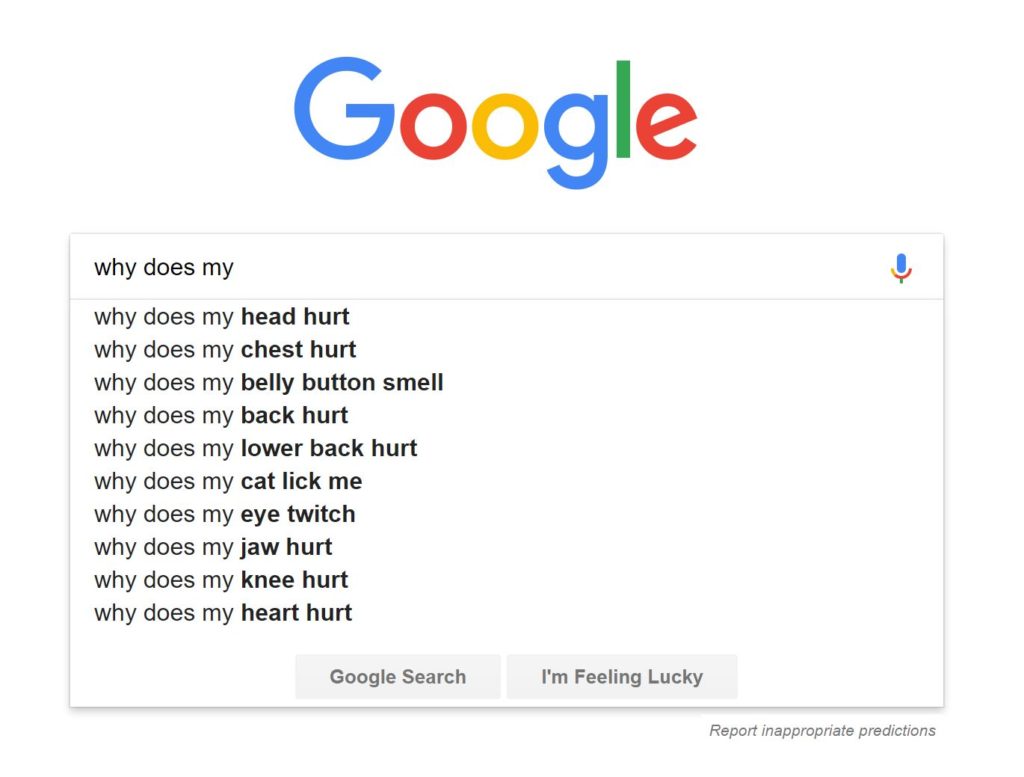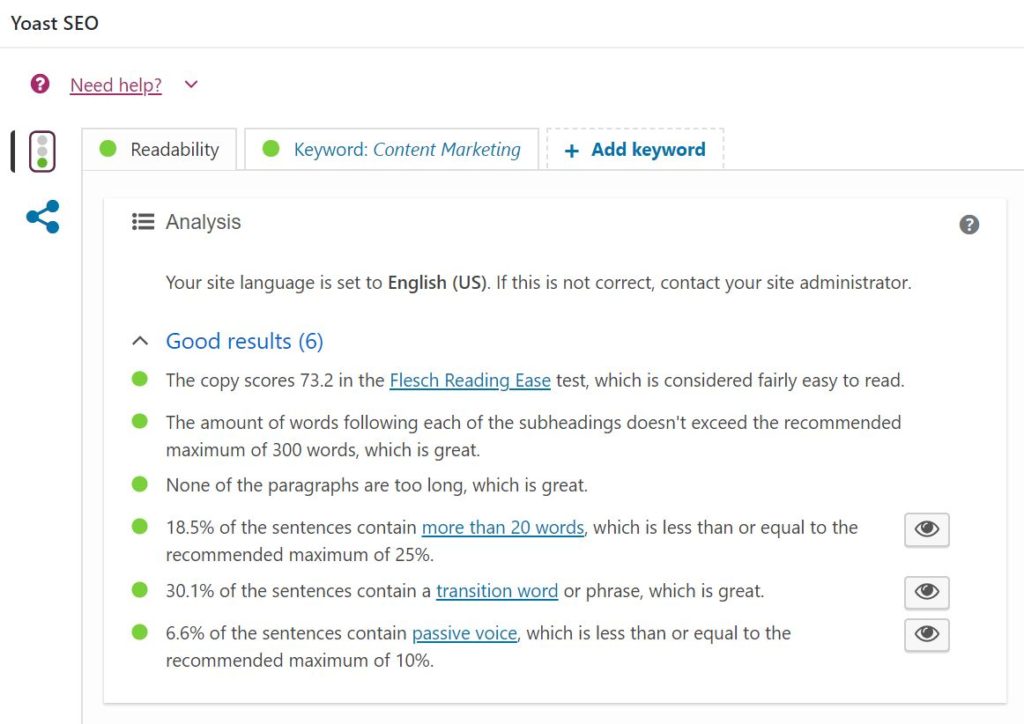28 Content Marketing Tools to Get More Blog Readers
When I first thought about becoming an entrepreneur, I never thought blogging would be something I was going to do. After all, ‘blogging’ from an outside marketing perspective doesn’t seem like it would help get more customers. It’s just writing.
That was my initial thought before I got into marketing. But I could have never been more wrong. I never knew how much traffic your website can pick up simply by the quality and context of your content on your website.
Another thing to consider, I used to provide traditional and digital marketing to automotive dealers as a Premier Google Partner. During a meeting with our Google rep, we were informed that a customer only visits 1.4 car dealerships before making a purchase.
Google was able to prove this in their data and they were able to deduce that the reason people are visiting less and less car dealers as time goes on, is because more and more information is becoming available to them online. Think about it, you probably already know what kind of car and with what features you want before you even go to the dealership. You simply go there to test drive it and get it for the price you want. You don’t need a salesman to try to sell you on a car.
You’ve already bought the car, you’re just going to the dealership to hand the check over.
The same is true with your products. Your website needs to sell your product for you, that’s the point of inbound marketing. Not only will you appear as an expert in your industry with all your content, you’ll also capitalize on that glorious search engine traffic for those vital keywords.
If you don’t have your own website yet, I strongly encourage you to check out this article “Why Do I Need a Website? Here are 13 Reasons Why”.
But if you’ve already got your website and you’re ready to start pulling in some traffic and appearing as the industry expert, then here are 28 content marketing tools to get more blog readers!
Content Creation
Before we can get people to read and view what you’ve wrote, we have to actually write it. The following 12 tools are to help you with your content creation
1) Google Analytics
If you don’t have your Google Analytics set up, I advise you too. It’s absolutely free and fairly simple. Google Analytics will be able to give you some important insight on who your audience is, where they’re coming from, and what pages they’re interested in on your site.
You’ll be able to use this information to help guide your next blogging decision.
2) Google Search Console
Google Search Console is another great free tool by Google you can link to your site. GSC, also commonly referred to as Google Webmasters Tools, provides valuable insights as to what keywords you’re ranking for, in what position on Google you’re appearing at for those keywords, as well as clicks, impressions, and much more.
Find what keywords have high search volume and create quality content for it and watch you move up the ranks.
For example:
For an industrial scale company named, Hammel Scale, I noticed that not only were “Truck Scales” the top revenue opportunity but they were also the highest performing keywords. The problem is they were showing up, but not until the 15th page of Google.
That’s when I noticed they need stronger and more quality content with that keyword. I created an 1,100 word blog post on “Proactive Truck Scale Maintenance” to capitalize on that keyword traffic then gained some quality backlinks to that post in December.
By April 11th, we were ranking #1 on Google for “Truck Scales” in our area.
3) Google AdWords/Keyword Planner
Google AdWords is Google’s tool for businesses to run ads on the search engine. But more importantly, the free interface includes a tool called the Keyword Planner.
The Keyword Planner is meant to give you some ideas on keywords you should bid for in your ad campaigns based on what products or terms you’d like to bid on. You can use it to determine the search volume for specific keywords as well as suggested ones.
But you don’t have to just use the tool for PPC. The tool is also very valuable when looking for organic keywords for content creation.
4) Quora
Quora is essentially a forum site that doubles as a social media platform. It’s a platform that exists for the purpose of answering questions and engaging with other professionals in your industry.
Once you determine your keywords you want to capitalize on, type them into the search box and see what kind of questions people are asking with those keywords in them. This will help you formulate the structure of your next blog post
5) Niche Specific Forums
This is my favorite place to find great content ideas. It also goes along with groups on Facebook and other social media platforms.
Arguably the best way to conduct business is to target a specific niche. In my case, if you follow me, I specialize in digital marketing and web development for landscaping and lawn care businesses. For this reason, my business is listed on sites like LawnSite, where I can engage and interact with the landscaping community. The tactic is simple, simply answer questions people have that you can provide solutions to but DON’T solicit, remember, you’re in their territory and people can sniff out when businesses are just trying to get a paycheck rather than help the community.
You’ll have leads asking you for more info before you know it.
6) Hemingway App
Believe it or not, one of Google’s ranking signals is how easy it is to digest the content you put on your site. You might already know this, but the average person isn’t actually at a 12th grade reading level, which means you should avoid big words, lots of adjectives, long sentences, and using a passive voice. Basically a 6th grade reading level.
Hemingway is a really simple app you can install on your compute. Simply use it to write your next article and it will write up everything that needs to be changed to ‘lower the reading level’ and make Google like you more.
7) Google Suggestions
I use this one a lot and it’s even simpler than you think. Google has suggestion feature built into the search engine, as most do, and you probably use this a lot.
Simply go to Google and start typing a search in, “Why does my” and see what comes up. These are the most commonly searched terms with these keywords.
After Google lists the different suggestions, click each one and see how many results you get. This will help you determine which keywords you should target and focus your article around.
8) SpyFu
Spyfu is one of the coolest tools I use to scope out my competition. This tool allows you to see what keywords your competition is ranking for, which in turn, allows you to start targeting your content to compete for their search traffic.
You only get to see a very limited amount of keywords and analytics from your competitors’ domains when using it for free, but it’s still a powerful tool!
9) SEMRush
Two is always better than one. SEMRush is a direct competitor of SpyFu, but third part analytics and reporting software always have discrepancies. It’s good to double check and make sure the information you’re pulling from one source can be validated from another source.
I personally like the way the analytics and dashboard of SpyFu looks compared to SEMRush’s.
10) Yoast SEO
If you’re on a WordPress site and you don’t have Yoast SEO installed then you’re doing life wrong! Yoast is the king of SEO plugins for websites. Not only will it tell you how good your on-site SEO scores are, but it will also tell you how good your readability is on your post.
Additionally, it will let you know if you’ve already optimized a different page for the same keyword. If you’re running the paid version of the plugin (which I heavily suggest if you write blog posts) then it will suggest pages to link to to increase your on-site page linking authority.
By the way, the above image is an actual shot of the scoring of this article at the time of writing this sentence.
11) Your Own Customers
This goes along with the point above about niche specific forums. Your customers provide valuable insights into what they want to learn by the questions they ask. Just listen.
Here’s how my process typically goes:
- Identify customer questions
- Formulate blog post topic
- Search keywords related to that topic
- Search longtail keywords in AdWords keyword planner
- Incorporate those longtail keywords into a Google Suggestion search
- See which suggestion has the most results
- Title my next post on the question that incorporates the long tail keyword with the most search volume
I did this exact process with my article, “Why Do I Need a Website? Here are 13 Reasons Why”
12) Marketing Solved – Blogging for Business
Of course like everything else marketing, we also provide a solution for you! It’s our Blogging for Business program and it’s super affordable!
This program will go over:
- The types of blogging that attracts readers
- How to drive loads of traffic to your blog
- How to monetize your blog and make money by writing!
- How to convert readers to sales
Distribution
Creating the content is only a third of the content marketing approach. Distribution is the next biggest one. Just because you created a blog post, doesn’t mean anyone is gong to read it. It’s here we’re I get to tell you how to move that content throughout the interwebz and get quality readers.
13) Google AdWords
The most obvious one to me is Google AdWords. It’s often debated that you shouldn’t run ads for your content, you should let the superb SEO of your article to do the organic leg work. Although I can agree with that to an extent, advertising your blog posts would be extremely beneficial if your post was the answer to an often asked questions. Like “Wix Versus SquareSpace”.
There are tons of articles out there comparing the two content management systems (CMS) so ranking for them organically can prove to be a challenge, unless you also put a bid in to rank at the top using AdWords.
14) Quora
I’m double dipping here, get used to it. Not only can you figure out what to right about with questions from people in your industry, but you can also answer the same questions with the content you wrote. Even if someone answered it already, go ahead and share your article with a link.
Although Quora uses ‘nofollow’ link attributes, meaning Google doesn’t pass on any link equity, you can still get a ton of organic traffic. But it’s important to note that ‘nofollow’ links are essential to good SEO practices, especially on platforms where you’ll get a lot of exposure.
So why not?
15) Forums
This is the same as Quora, although niche specific, most of these are also ‘nofollow’ links as well but I can’t count the amount of traffic I got from my comment on a forum with a link to my article and people have reached out to me
The best part about sharing content here, is all of these people are already in your industry looking for the answers you have.
16) MailChimp
I could have just been generic on this one and said, “email”, but I actually want to provide you with the name of a free tool. As long as your list is under 2,000 names and you don’t mind having a MailChimp logo at the bottom of your email, this tools is free.
Email is a fantastic way to get your content out there. I mean you might have even come to this blog post from one of our emails you’re subscribed to.
17) Content Sites
There are tons of sites out there that simply exist to publish content. Like a newspaper source where anyone can contribute to. One of these sites that I use is Medium. It’s completely free to have a Medium account and start writing content where hundreds of thousands of people can see and end up navigating to your page.
You just write the content, set up your tags, similarly to Instagram or Twitter hashtags, and watch people find you and clap for your content.
Because Medium probably has a higher domain authority than you, it’s wise to repost your content on their site. However, it’s imperative you set up the ‘rel:canonical’ URL to your own post on your site (there’s a nifty button for this). This tells Google that the content was originally published on your site and Medium is simply redistributing it. This will prevent any conflicts of you and Medium competing organically for the same content.
18) LinkedIn
LinkedIn is probably the number one social media to distribute informational content on, especially considering 50% of all B2B buyers research a company on LinkedIn before making a purchase. If your niche is in the business sector, then this is definitely a medium you do not want to ignore.
19) Google Posts
If you follow all my posts on Marketing Solved, you know that I put a lot of emphasis on SEO, that is, organically ranking at the top of Google. The main purpose of that is to be seen over all the other results.
Well something you can do to catch more reader attention is to add Google Posts. But first you’ll have to claim your Google My Business if you haven’t already. Then just add a post and give your audience more to see of your business.
This is what it looks like when you search my business:

But keep in mind, these posts only last for 7 days. They need to be consistently updated.
20) Facebook
I can’t even count the number of times I’ve navigated off of Facebook to read an interesting article or blog post on a topic I was already looking for info about. Or at least something that I didn’t know based off the title and wanted to learn more.
Facebook is the number one social media network out there with over 2 billion users. Not using this platform would be a travesty to the distribution portion of your content.
21) Facebook Ads
But probably the main reason I see so many articles on topics I was already looking into is because they’re targeting me based on search behavior and interests categories. Based on who and what I interact with on Facebook, those interactions are essentially stored in Facebook cookie data, which means advertisers using Facebook can target you based on your interests.
If you’re into hiking and mountain climbing, there’s a good chance you may have seen some REI ads on your Facebook. Additionally if you’ve been looking on a website at equipment, they could have a tracking pixel placed that will serve you their ad based on the mere fact you visited their site and are now on Facebook.
22) Pinterest – Specifically, PinFunnels
Oh look at that. Another solution that we offer.
If the thought of marketing on Pinterest makes you wonder how your content mixes in with recipes and fitness routines – think again. According to shareaholic, Pinterest is the second largest traffic driver – next to Facebook.
This is a traffic gold mine and the best part? They’re buyers. So, if you haven’t yet – Pinterest can unlock a flood of new customers.
Measuring
We’ve now created and distributed the content, but we’re not done. We still have to measure the performance of the mediums we distributed it on a well as engagement metrics when people are reading it.
23) Google AdWords
Again, Google AdWords is a great source to check out metrics if you’re running ads to you blog posts. This will give you a good idea on you market share for the keywords you chose to write about as how you fair against your competition.
24) Google Analytics
This is probably the number one method to measure the metrics for how engaging your content is. In Google Analytics, you can view how long people spend reading you blog post, how many pages and what pages they clicked to when reading your post, and simply whether the readers find what you’re writing of any value.
The best way to use Google Analytics to determine what you should write about next is by seeing what pages they’re visiting after they read your post.
25) KissMetrics
KissMetrics is a measurement tool that when I think of, I think of “Big Brother”. This software really gets into the nitty-gritty of what your customers are doing on your site.
It detects behavioral patters and stores data from your customers who visit your site. Although it’s a little more advanced that what you can see with Google Analytics. This software can deploy automatic emails and create custom Facebook ad lists simply by telling it to track certain behaviors on your site.
26) Raven Tools
Raven Tools is an all-in-one SEO reporting dashboard tool. It’s especially beneficial for marketing agencies delivering white label reports to their customers.
This program will allow you to create custom reporting dashboards with key performance indicators (KPI) that matter to either you or the client in a nice, professional looking display.
However it offers much more than Google Analytics can. It can monitor backlinks and notify you if a backlink changes, find any crawl errors on your site or page, and even monitor your competition with your keywords you’re targeting.
27) Mozbar
Mozbar is my one of my most commonly used tools. It’s a Google Chrome extension you can download and view the basic SEO components of every page.
Everything from what a page’s meta description is, to its page authority, to how many links are on that page and which ones are internal, external, nofollow, and follow.
The the main metric you would want to use this tool for when content marketing is what the page authority is. Page authority is a metric used by Google to determine how relevant a page is based on its content and what links it has to it both internally and externally.
The higher the page authority, the more/better the page that link to it.
28) Google Search Console
The Search Console isn’t just a place to get keyword ideas, it obviously tracks how well you’re performing for those keywords. So give it a couple months after you post and distribute your content and check back with this one, see how your keyword rankings have changed.
Wrapping it Up
Wow, that was a lot of content 3,117 words right up until here. But you made it! And even if you skimmed, that’s fine, just keep this post as a reference guide. There are a lot of tools in a contractor’s belt and sometimes they even forget what the best tool for the job is. So if you find yourself in a similar situation when it comes down to creating, distributing, or measuring your content, just refer back to this post!
Want more? How about a metaphorical free bag of goodies?!
















